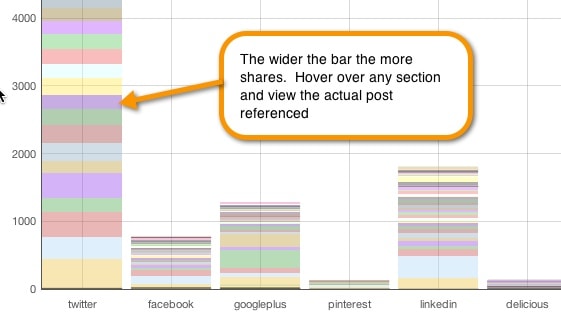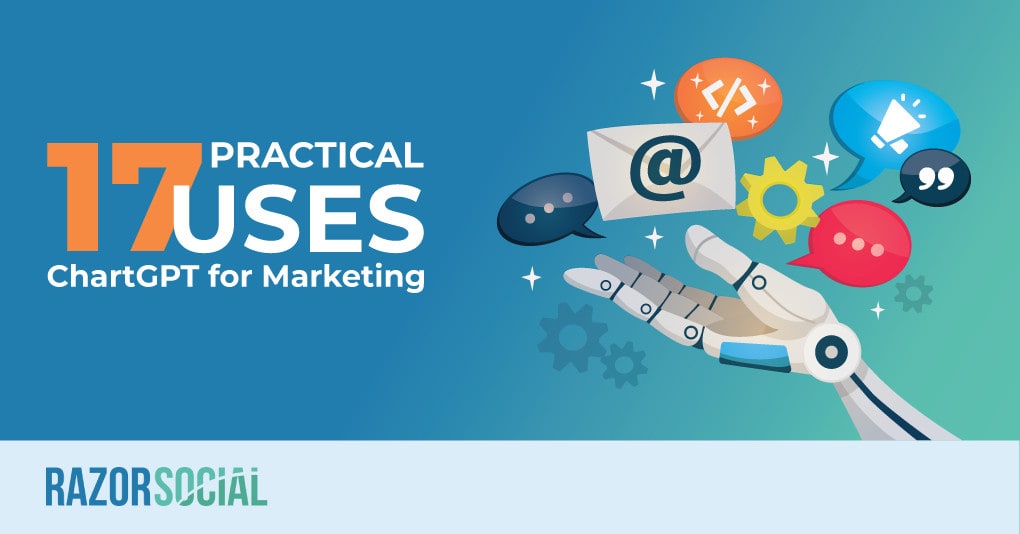
Or have you heard that Klout should be ignored? Read on and find out the truth…
There’s nothing like a bit of controversy to kick off a blog post!
Influence is important in social media, and social media influencers are people who have a lot of this highly-prized influence. If you’ve got a large, relevant audience that listens to you, then you’ve got influence. How much of it you are considered to have depends on what action your followers and fans take as a result of what you say.
If you can build relationships with people who have influence over your target audience, you can generate sales on the back of this.
But how do you assess influence and know who to approach?
This article could be very long so we’re making some assumptions:
- 1. We’re assuming that the influencers you are looking into are influential with the audience you want attention from.
- 2. We’re assuming that this is online influence: someone might have one Twitter follower and be hugely influential in the real world!
- 3. There is no tool that can measure influence accurately: it’s an art not a science. How influential is a person offline and how can you measure that? It’s not easy!
Before we delve into this article here’s an interesting slideshare presentation on influencers from Digital lab.
So, bearing in mind those assumptions, the way to assess somebody’s degree of influence involves asking the following questions.
1. Which other influencers are engaging with them online?
Influencers follow other influencers, so one of the best ways of finding them is looking at who they hang out with.
I recently tested out Littlebird and was impressed with the lists of influencers it produces. You enter the topic of your choice, and then Littlebird will find out who is participating in that topic.
It then ranks them by how connected they are to their peers, on the assumption that if you are very influential, more people will have followed/connected with you.

Littlebird uses an ‘Insider’ score to display how many other influencers are connected to a person. The theory is that the higher the number, the more influence the person has.
So this is a good way of building up your list of influential contacts.
Here are some of the other helpful features of Littlebird:
- Identify popular content – Based on the influencer list, you can view the most popular content shared on Twitter and then share some of it yourself.
- Discover connections – Find out who you are following who is not following you back, and vice versa. Identify targets to connect with.
- Blogs – Browse through the latest posts shared out by the influencers.
- Location – Browse influencers by location so you can build up your network within a country of your choice.
- Network Visualization – View the network in a chart where you can view all the connections between all the influencers.
- Export your reports – Depending on your subscription level, you can export a set of reports.
2. What is their Influence score?
There are tools that try to calculate a person’s influence and quantify it in a number, or score. The higher the score, the more influential you are meant to be. These systems are not perfect and should never be used in isolation, but they do have smart algorithms that analyze your activity online and give you an idea of potential influence.
Klout – Klout gives you a score out of 100 and assesses which niches you are influential in. You connect each of your social networks through the site and it analyzes all your activity. Klout notes who is sharing your content, the likes, comments, shares etc you get, and then a score is calculated. This score can go up or down over time.

Kred – Kred offers 2 scores, calculated by your Twitter activity over the last 1,000 days. If you connect your Facebook account too, this can also contribute to your score. The two scores are:
- Influence – This is how much you get retweeted, replied to, mentioned or followed. If you connect your Facebook account it will measure posts, mentions, likes, shares and event notifications.
- Outreach – This is how much you are engaging or sharing with other people. You could be retweeting, replying or mentioning others.
Kred provides you with details of how it is measuring your score. For example, you can view which of your tweets were shared by other people, and tweets where you were mentioned, and then view points that are awarded towards your score for those tweets (in the very right hand column).

The scoring systems do have some value and take away some of your groundwork. It’s not something to use on its own but it can be one indicator that helps you to build a broader picture.
3. How much sharing happens on their site?
If somebody has a blog and its content gets shared, the level of sharing will help to assess influence. This can also help you to identify topical influence, because you’ll see the kind of content people are sharing on their blogs.
If you find a blog that gets a lot of shares, then this is a good way of measuring influence. If they write an article about your product or service then it’s likely to get a lot of shares, too. If this audience is relevant to your business, then you can potentially get sales out of this sharing.
Social Crawlytics is a useful tool that crawls through a competitor’s website and creates a report based on social shares for all their blog posts. You can then see a list of these posts and all their shares across each of the social networks.

4. What is their domain authority?
This is particularly important if you’re trying to find influential bloggers. A blogger’s website is assessed by Google, which then decides if it deems the blogger to be influential enough to send it lots of traffic. You are competing for traffic against other influential blogs, so the higher your domain authority, the more traffic you will get.
Moz are a company that develop inbound marketing and SEO software. They have a rating system where they rate millions of websites out of 100 and allocate them a domain authority score each. The higher your domain authority, the more likely you are to be able to compete with your competitors online.
You can check your domain authority using Opensite Explorer.

If someone approaches you and says they are an influential blogger and you find that their domain authority is 20, this means not many high authority sites are linking to them.
This is similar to the premise of Littlebird: influencers connect with influencers. As your blog develops, if your influence is growing you will get more links to your site and your authority will go up.
5. How much traffic do they get?
The only 100% accurate way of finding someone’s traffic is getting access to their analytics. However, there are tools out there that will give you an estimate of a website’s traffic. And if you use the same tool to compare competitors, you’ll be using the same formulas to estimate their traffic so, although it may not be totally accurate, you should be able to compare sites successfully.
Getting a lot of traffic and having a high domain authority are generally linked. It’s unusual for a very low domain authority website to get a lot of traffic because it’s hard for it to rank for content on Google. If it gets a ton of traffic from social media, that’s not going to affect their domain authority. However, as people get to know about you through social media they will start linking to you from their websites, which is where the two factors are connected.
If you are looking into a relatively big site, you can use Compete or Quantcast (US focussed) to get an estimate of traffic. Another tool that is useful for assessing traffic volume is SEMRush. All these tools give estimates, so are not 100% accurate, but it’s great for comparing competitors to see who gets more traffic and how much more they get (e.g. 5 times as much).
6. How much influence do they have on a topic?
A key influencer may be able to change the direction of an entire industry, which can have huge revenue implications for companies. But you don’t usually see an immediate revenue impact so it’s very difficult to measure this level of influence.
For example, recently Mark Schaefer wrote an article about a concept called ‘Content Shock’. It’s about the fact that we’re coming to a stage where there is far too much content for people to consume, so companies will soon find it difficult to get attention.
This was an extremely popular article that was written about hundreds of times on many sites that have large audiences. This influential post from Mark could affect the decisions of many companies considered their investment in content marketing going forward.
Twtrland categorizes people into 60,000 categories. You can view somebody’s influence based on each category, so you can filter the most. Having so many categories is great, because it can really help identify the most appropriate people in your niche.
When you search based on category, you can then view people’s amplification, reach and relevance based on that topic.

7. How much they do in sales!
This is a really interesting measure of influence.
If somebody talks about your products/services, and they then start to sell, that person is influential. So you need to have some way of measuring this type of influence so you can track it and try to build relationships with the most useful people. For example:
a). Check where your traffic is coming from, and the conversion rates that result from this traffic.
b). If you’re working directly with an influencer, set up an affiliate program so they can use an affiliate link when they share your content. With an affiliate code they will get commission on sales, and you’ll be able to track how influential they are too!
c). If they are not comfortable sharing affiliate links, you could provide promotional codes that they can offer to their audience. The redemption of these codes can then be tracked.
Summary
Influence, and the measure of influence, are really hot topics and yet it’s a very difficult thing to measure. Through a combination of several indicators you can identify and make a list of key influencers.
As you start tracking results, you may add some influencers onto your list and take others off. There is no magic formula: you start with a good, well-researched list and adapt as you go!
Actions
So what steps do you take at this stage?
1. Comment below – We would love to hear your opinion. What have we missed out in this post? What action will you take as a result of reading this post?
2. Take some action – How about creating your list of influencers using some of the steps above?
3. Share this post – If you feel it will help your audience, why not share it?
All the best,
Ian



